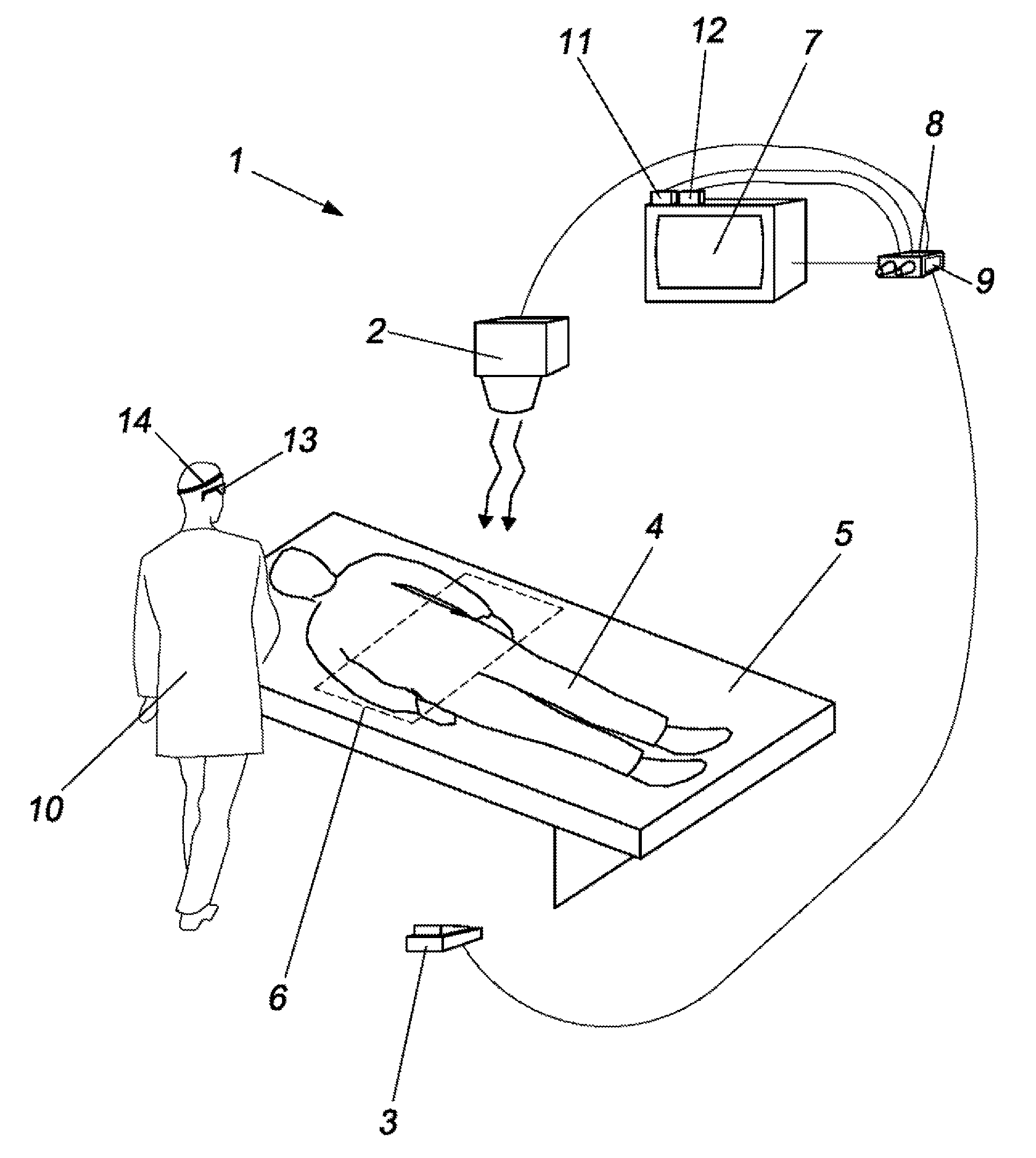Automatic control of a medical device
a medical device and automatic control technology, applied in the direction of radiation beam directing means, instruments, applications, etc., can solve the problems of increased cumulative dose of ionising radiation received by both patients and staff, poor synchronisation of activation and deactivation of ionising radiation, waste of time before pressing, etc., to reduce the cumulative dose and increase the safety and convenience of use.
- Summary
- Abstract
- Description
- Claims
- Application Information
AI Technical Summary
Benefits of technology
Problems solved by technology
Method used
Image
Examples
Embodiment Construction
[0109]The system 1 according to the present invention consists of an element 2 which emits ionising radiation, for example x-rays, fluoroscopy or the like.
[0110]The emission of radiation by this element 2 is habitually controlled by an emission control unit which includes a pedal 3 or switch which is pressed by the operator. For as long as the pedal is pressed down, the emission of radiation takes place, and vice versa.
[0111]In the case of obtaining radiological images, the beam of radiation is directed towards the patient 4, who is usually lying on a stretcher 5, and subsequently meets an element 6 which is sensitive to this radiation. When the beam passes through the body of the patient, the absorption which occurs leads to formation of the image which is picked up by the element 6, and is transferred to the display monitor 7.
[0112]In the case of radiotherapy, the image which is shown on the screen serves the purpose only of verifying that the patient is positioned correctly, and ...
PUM
 Login to View More
Login to View More Abstract
Description
Claims
Application Information
 Login to View More
Login to View More - R&D
- Intellectual Property
- Life Sciences
- Materials
- Tech Scout
- Unparalleled Data Quality
- Higher Quality Content
- 60% Fewer Hallucinations
Browse by: Latest US Patents, China's latest patents, Technical Efficacy Thesaurus, Application Domain, Technology Topic, Popular Technical Reports.
© 2025 PatSnap. All rights reserved.Legal|Privacy policy|Modern Slavery Act Transparency Statement|Sitemap|About US| Contact US: help@patsnap.com



